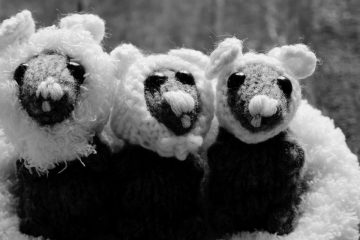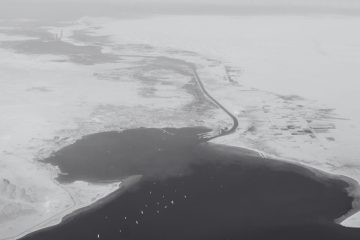What Happened On April 5th?
Easter Island, a speck of volcanic rock adrift in the South Pacific Ocean, has intrigued imaginations for centuries. More specifically, the colossal, enigmatic statues on the island – the moai – have fueled theories of lost civilizations and extraterrestrial intervention. However, the island’s true history remained a mystery until April 5th, 1722, when European explorers found the isolated paradise.
Now, Dutch explorer Jacob Roggeveen wasn’t specifically searching for Easter Island. Rather, he was leading a squadron of three ships on a chartered mission for the Dutch East India Company, tasked with finding a rumored continent south of South America.
Lost and running low on supplies, Roggeveen and his crew veered off course, their instruments failing them amidst the vast emptiness of the Pacific. Then, on a Sunday Easter morning on April 5th, 1722, a lookout on Roggeveen’s flagship, the “De Arend” (The Eagle), shouted with surprise. Looming on the horizon was a landmass that looked like a dream.
The First Impressions
As Roggeveen’s ships cautiously approached the island, they first saw volcanic peaks, some still smoldering. Yet, what truly astonished the explorers were the colossal statues scattered across the coastline. These moai, some standing upright, others lying face down, dwarfed the sailors with their imposing size and enigmatic presence.
Roggeveen estimated their height to be around 60 feet (18 meters), although most moai are actually shorter. The islanders, a Polynesian people with a vibrant culture, greeted the Dutch with a mix of curiosity and caution. Communication was limited, but Roggeveen learned that the islanders called their home “Rapa Nui,” meaning “Great Land.”
Roggeveen’s visit to Easter Island was brief, lasting only a single day. However, such a short trip began a long and complex relationship between the island and the outside world. Despite this, Roggeveen’s account of the island, published upon his return to Europe, ignited widespread fascination. The moai became a symbol of a lost civilization, a testament to a mysterious bygone era.
While Roggeveen’s crew documented encountering hundreds of moai, their observations offered limited insight into the statues’ purpose. Interestingly, some accounts suggest the islanders themselves seemed less impressed by the moai.
Roggeveen noted that the islanders venerated a single, upright moai wearing a red stone hat, hinting at a system of belief and culture surrounding these enigmatic figures. The arrival of the Europeans also brought unintended consequences. Controversially, the arrival of the Europeans brought new diseases which affected the Rapa Nui population.
How Did They Interact
Communication between the Dutch and the Rapa Nui people proved challenging. Roggeveen’s crew relied on hand gestures and rudimentary sign language, leading to potential misunderstandings. This was further complicated by the fact that the Rapa Nui language, known as Rapanui, was entirely distinct from any language spoken by the Europeans. Sadly, this missed opportunity to document Rapanui in its prime hindered a deeper understanding of the islanders’ culture and history for centuries to come.
Roggeveen’s account describes being greeted by the Rapa Nui people with a lavish display of food, including roasted plantains, sweet potatoes, and sugar cane. However, some historians speculate that this perceived generosity might have been a misunderstanding. It’s possible the islanders were simply preparing a ceremonial feast for their own purposes, which the Dutch misinterpreted as a welcoming gesture.
What Became Of The Civilization?
Roggeveen’s initial description of Easter Island fueled the notion of a “lost civilization” that built the moai. While it seemed like a great story, the narrative overshadowed the reality of a thriving Polynesian culture with a rich oral history and sophisticated social organization. It wasn’t until later expeditions, coupled with archaeological digs and linguistic studies, that a more complete picture of the Rapa Nui people and their achievements rose to the surface.
While Roggeveen’s brief visit began a tumultuous period for Easter Island, it also created a high level of global interest in the island’s unique culture and heritage. The moai became a symbol of human ingenuity and a testament to the remote civilization.
Today, Easter Island stands as a UNESCO World Heritage Site, attracting visitors eager to see the moai firsthand and learn about the Rapa Nui people’s history and lifestyle. Roggeveen’s chance encounter, despite its limitations, shows us the interconnectedness of our world and the importance of preserving cultural diversity.
In all, the discovery of Easter Island by European explorers opened a window into a unique and isolated culture. While Roggeveen’s brief encounter left many questions unanswered, it ignited a thirst for knowledge about the island’s history and the secrets behind the moai.
Subsequent expeditions by European and American explorers throughout the 18th and 19th centuries gradually peeled back the layers of mystery. Thus, they were able to reveal new islands, countries, and even a whole new continent!
What Did You Learn?
This island must be on the coolest places to visit in the world!
With such unique culture and lifestyle, the Rapa Nui civilization has now fit into pop culture and fascination.
Would you ever visit there?
Thanks! See y’all in the next one!





